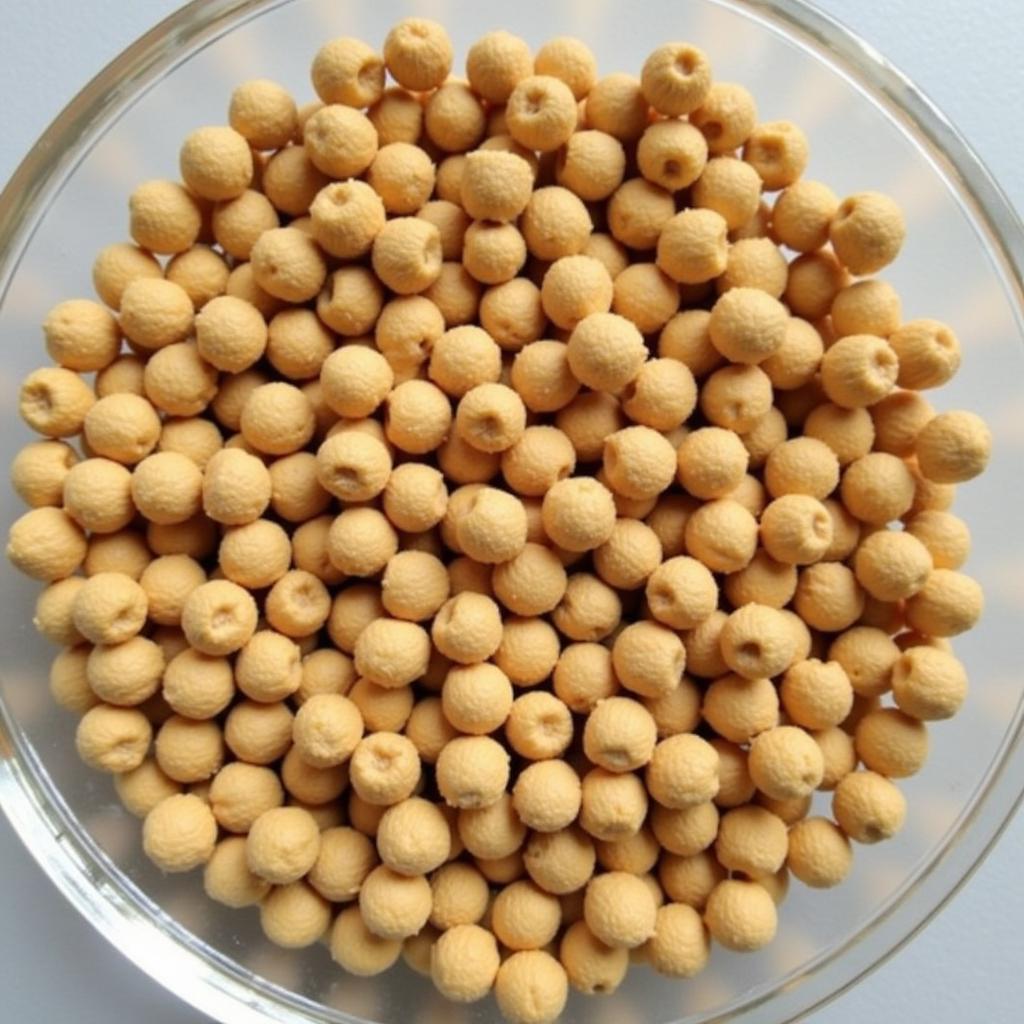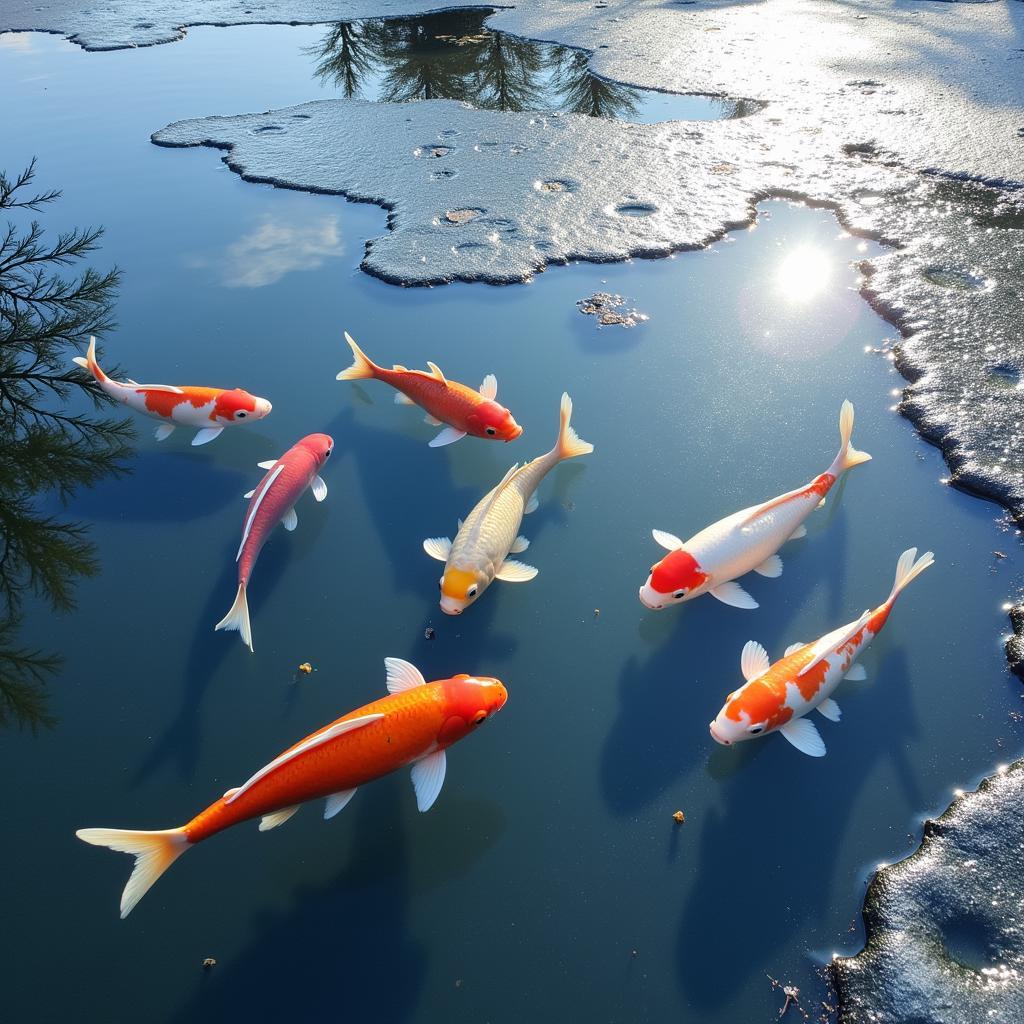Koi Winter Food is a crucial aspect of koi keeping that often gets overlooked. As temperatures drop, so do the metabolisms of our finned friends, impacting their dietary needs. Understanding these changes is key to ensuring your koi survive the winter and emerge healthy and vibrant in the spring. Providing the right nutrition during these colder months is not just about feeding them; it’s about providing them with the necessary resources to withstand the harsh conditions.
As winter approaches, you’ll notice your koi becoming less active. This is perfectly normal. Their metabolism slows down considerably, and they require less food. Overfeeding during this period can lead to several problems, including poor water quality and digestive issues. Choosing the right fall koi food is crucial for preparing them for the colder months.
Choosing the Right Koi Winter Food
So, what should you be feeding your koi during the winter? The key is to switch to a best koi carp food specifically designed for colder temperatures. These winter foods are typically lower in protein and higher in carbohydrates, which provides easily digestible energy without overloading their systems. Look for wheat germ based foods as they are more readily digestible in lower temperatures. Avoid foods high in protein, as these can be difficult for koi to process during winter.
 Koi Winter Food: Wheat Germ Pellets
Koi Winter Food: Wheat Germ Pellets
Feeding Frequency and Amount
How often should you feed your koi in winter? This depends on the water temperature. If the water temperature consistently stays below 50°F (10°C), you can stop feeding altogether. Your koi can survive for several weeks without food at these temperatures. Between 50°F and 60°F (10°C – 15°C), you can feed them a small amount of winter food once every few days. Remember, it’s always better to underfeed than overfeed during winter. Check out resources like how long can koi go without food in winter for more detailed information on feeding schedules.
Water Temperature and Koi Feeding
Why is water temperature so crucial? Koi are cold-blooded, meaning their body temperature fluctuates with the surrounding water. Cold water slows down their metabolism, including their digestive system. Feeding them rich food when their digestion is sluggish can lead to uneaten food decaying in the pond, which can negatively impact water quality.
 Koi in a Winter Pond
Koi in a Winter Pond
Preparing Your Koi for Winter
Switching to blue ridge koi food or another suitable fall food in the autumn helps your koi build up reserves for the winter months. This is like stocking up your pantry before a snowstorm! The right fall food will provide the necessary nutrients to help them withstand the cold.
Importance of Fall Feeding
Fall feeding is just as important as choosing the right winter food. It’s a period of transition, where your koi need to build up their energy reserves. This stored energy will sustain them throughout the winter when their food intake decreases.
Conclusion
Providing the right koi winter food is essential for their health and survival. By following these guidelines, you can ensure your koi stay happy and healthy throughout the winter months and emerge vibrant and ready to thrive in the spring. Remember, choosing the correct winter diet is a critical part of responsible koi keeping. Understanding their needs during this colder period will ensure your pond remains a healthy and thriving ecosystem.
Frequently Asked Questions:
- What should I feed my koi in winter? Use a low-protein, high-carbohydrate wheat-germ based koi food specifically formulated for winter.
- How often should I feed koi in winter? If the water temperature is below 50°F (10°C), you don’t need to feed them. Between 50°F and 60°F (10°C – 15°C), feed a small amount every few days.
- Why is water temperature important for koi feeding? Koi are cold-blooded, and cold water slows their metabolism and digestion.
- What should I feed koi in the fall? A high-quality fall koi food will help them build up essential energy reserves for the winter.
- Can koi survive the winter without food? Yes, koi can survive for several weeks without food in water temperatures below 50°F (10°C).
- What is the best koi carp food for winter? A wheat-germ based, low-protein, and easily digestible pellet is ideal for winter.
- Where can I find more information about hai feng koi food? Visit our website for detailed information on various koi food brands.
Other questions you might have:
- How do I maintain my pond during winter?
- What are the signs of a sick koi in winter?
- How do I prepare my pond for spring after winter?
Find more articles on our website about:
- Koi health and care
- Pond maintenance
- Different types of koi food
Need Help? Contact us 24/7. Phone: 02437655121, Email: minacones@gmail.com. Visit us at 3PGH+8R9, ĐT70A, thôn Trung, Bắc Từ Liêm, Hà Nội, Việt Nam.